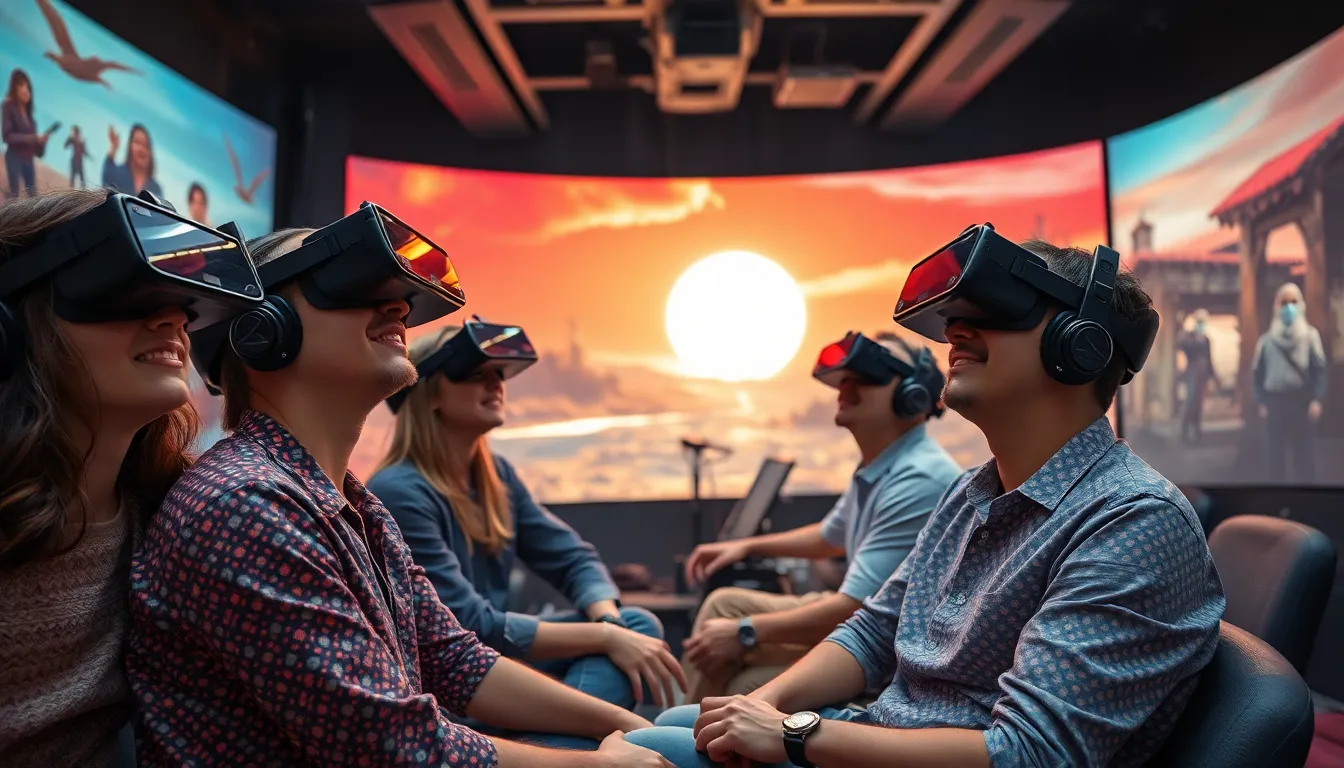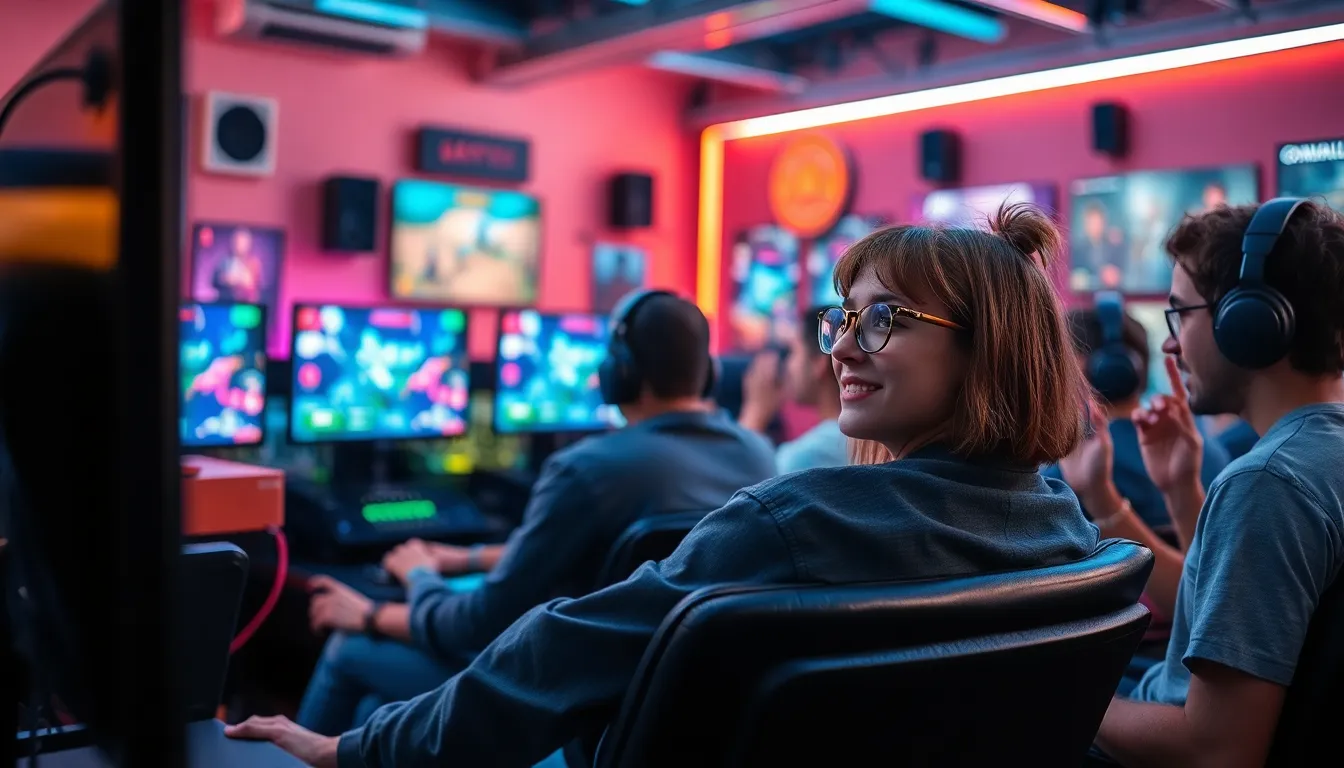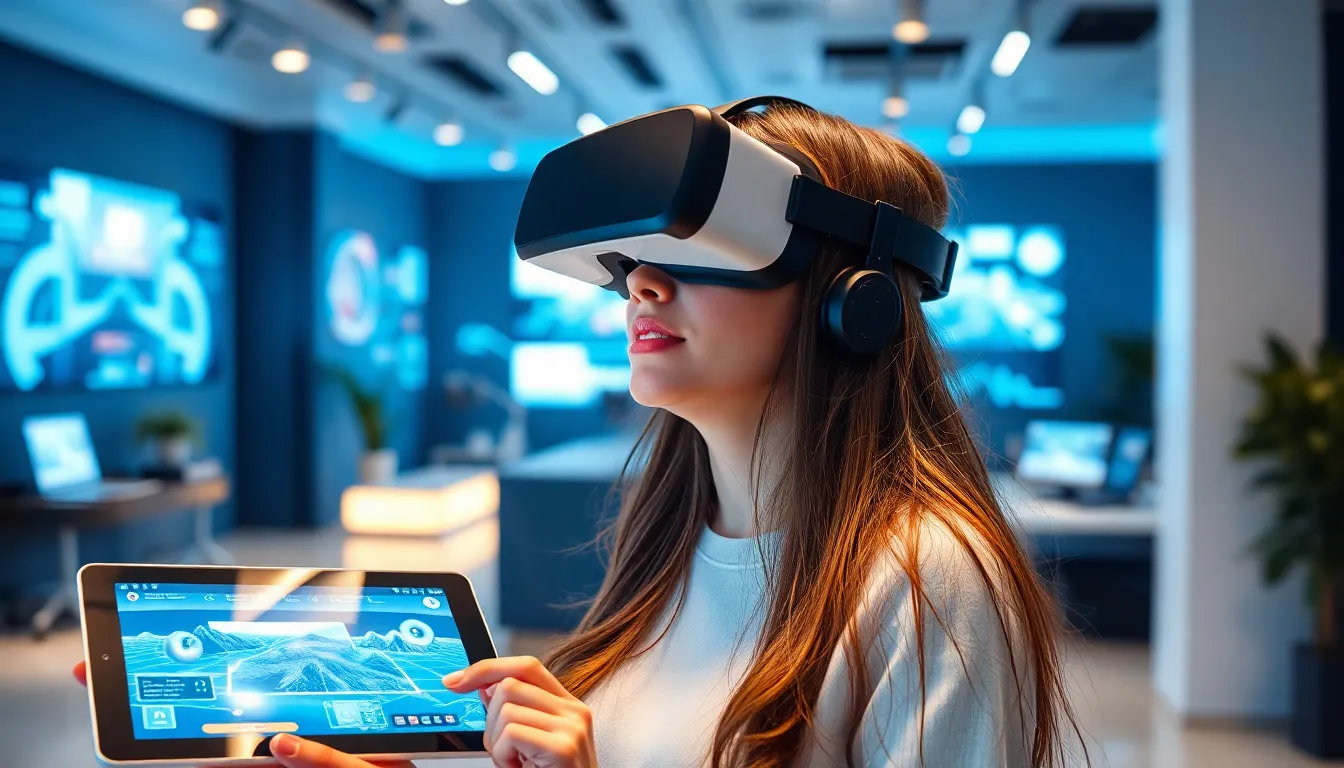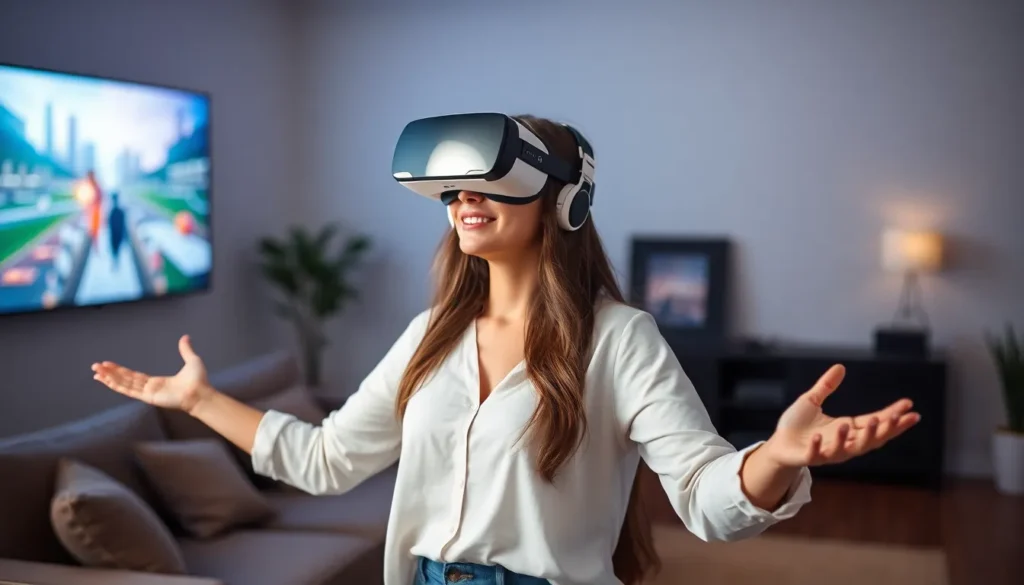Table of Contents
ToggleImagine stepping into a movie where you’re not just a spectator but a part of the action. That’s the magic of virtual reality in films. Gone are the days of simply munching popcorn while watching heroes save the world. Now, viewers can dodge bullets, explore alien worlds, or even dance with dinosaurs—all from the comfort of their living rooms.
Overview of VR in Film
Virtual reality transforms the film landscape by immersing viewers in interactive narratives. This technology shifts passive observation to active participation, redefining audience engagement. Immersive experiences invite individuals to explore dynamic environments, creating opportunities for personalized storytelling.
Viewers can experience thrilling scenarios, like dodging bullets or navigating fantastical worlds, enhancing emotional connections to the story. Filmmakers leverage VR to develop narratives that unfold based on viewer choices, thus changing traditional storytelling methods.
Several films have successfully integrated VR elements, showcasing the medium’s potential. For instance, “The Lion King” created a VR experience that allows users to step into the African savannah. By participating in scenes, users interact with characters, fostering a deeper engagement.
Genres such as horror and adventure benefit significantly from VR’s immersive capabilities. In horror films, for example, environments dynamically react to viewers, amplifying suspense and fear. Alternatively, adventure-themed VR experiences promote exploration, offering breathtaking visuals and enhanced emotional involvement.
The film industry continues to explore VR’s potential, investing heavily in development. Numerous studios have launched projects focused solely on virtual reality, aiming to produce multi-sensory experiences. This shift in approach signals a growing recognition of VR’s impact on storytelling breadth and depth.
As the technology evolves, expect more filmmakers to adopt VR, seamlessly blending traditional narratives with immersive techniques. Audiences will likely see VR redefine cinematic experiences, making future films interactive and participatory.
Benefits of VR for Films

Virtual reality revolutionizes the film industry by creating unique experiences that engage audiences on multiple levels. Not only does it enhance immersion, but it also fosters interactive storytelling.
Enhanced Immersion
VR allows viewers to fully engage with environments. Participants feel as though they’re inside the narrative, experiencing sights, sounds, and even the emotions of characters. With 360-degree visuals, users can explore scenes from any angle, offering a sensation of presence not found in traditional films. Such immersion heightens emotional responses, making moments more impactful. Filmmakers craft intricate worlds where viewers can traverse landscapes, interact with settings, or even feel adjustments in soundtrack dynamics. This level of engagement leads to stronger connections between the audience and the story being told.
Interactive Storytelling
The potential for interactive storytelling in VR is groundbreaking. Narratives evolve based on viewer choices, creating personalized outcomes that change the cinematic experience. With multiple plot lines, filmmakers offer viewers agency, empowering them to affect the story’s direction. In VR films, decisions influence character interactions and story arcs, allowing for unique experiences for each participant. This interactivity transforms simple viewing into active participation, making the narrative more engaging and replayable. As technology advances, the blending of decision-making with immersive narratives promises a new era in film entertainment.
Challenges of Implementing VR in Film
Implementing VR in film presents several challenges that creators must overcome.
Technical Limitations
Technical limitations often hinder VR’s full potential in filmmaking. Hardware requirements for VR experiences can be demanding, requiring powerful devices that may be inaccessible to some users. Software compatibility can also pose issues, as various VR platforms may not support the same content. Additionally, creating high-quality, immersive visuals requires significant time and resources, making production costs higher than traditional filmmaking. Frame rates, latency, and resolution also matter, as lower performance can lead to motion sickness among viewers. These technical factors present barriers that filmmakers must address to create compelling VR narratives.
Audience Acceptance
Audience acceptance remains a critical hurdle for VR in film. While immersive experiences offer unique storytelling, many consumers still prefer traditional movie formats. Comfort levels with VR technology vary, as some individuals may feel overwhelmed by headsets or interactive elements. Social environments around film viewing can also affect acceptance; groups might hesitate to engage in VR experiences, fearing a disconnect from one another. Fan expectations play a role as well, as audiences may have preconceived notions about how films should be experienced. Understanding these dynamics is essential for filmmakers to successfully integrate VR into mainstream cinema.
Future Trends in VR for Films
Emerging trends in VR promise to revolutionize the film industry, pushing creative boundaries and enhancing viewer experiences.
Innovations in Technology
Innovative advancements in VR technology drive the film industry’s evolution. Developers focus on improving hardware capabilities, such as headsets that offer higher resolutions and broader fields of view. These enhancements lead to richer visual experiences, enabling filmmakers to create more detailed and immersive environments. Moreover, progress in haptic feedback technology allows audiences to experience simulated sensations, deepening engagement. Filmmakers also explore integration with artificial intelligence, allowing for more dynamic and adaptive narratives. As these technologies advance, VR in films becomes increasingly sophisticated, transforming how stories unfold.
Changing Consumer Preferences
Consumer preferences shift towards interactive and immersive experiences. Audiences increasingly seek out films that offer more than passive viewing. Many viewers desire personal connections with narratives, leading to a growing interest in participatory storytelling. Virtual reality meets this demand by enabling tailored experiences that rely on viewer decisions. Younger generations, in particular, gravitate toward fresh formats that blend gaming and cinema. This trend encourages filmmakers to focus on creating content that engages viewers actively. As tastes evolve, the demand for innovative VR film experiences is likely to rise, shaping the industry’s future.
The future of film is undeniably intertwined with virtual reality. As technology advances and audience preferences shift toward immersive experiences, filmmakers are poised to embrace VR more fully. This evolution holds the promise of redefining storytelling by allowing viewers to engage with narratives in unprecedented ways.
While challenges remain in terms of technology and audience acceptance, the potential for deeper emotional connections and personalized storytelling is too significant to ignore. As VR continues to develop, it’s likely that the film industry will adapt, creating richer and more engaging cinematic experiences. The journey into this new frontier is just beginning, and its impact on how stories are told and experienced will be profound.







